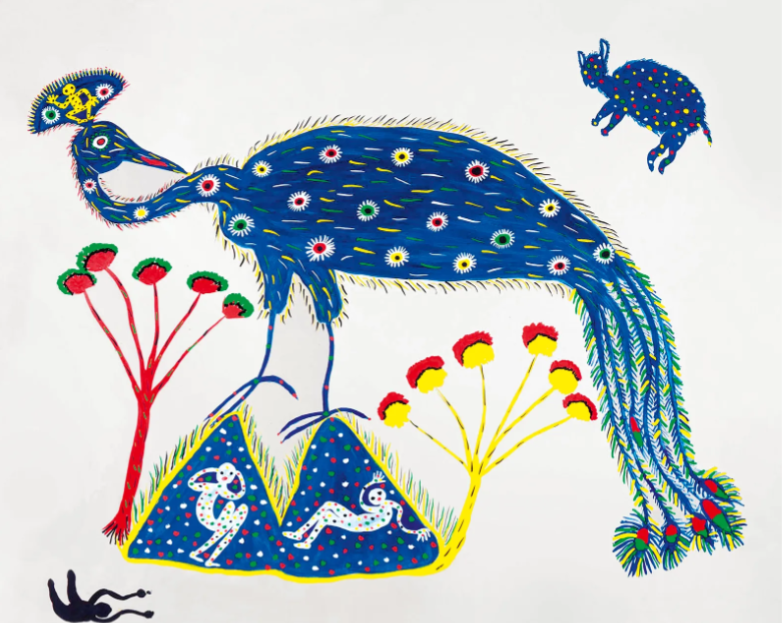Rooted in immense diversity, our culture has a truly distinctive design language. From vibrant art forms which seamlessly intertwine with our rich heritage, to our world-renowned textiles. From the printed textiles of Jaipur, Sanganer, and Bagh to the exquisite embroideries and weaving traditions, such as Banarasi brocade and the opulent kanjivarams from the south, our textile legacy resonates globally. However, the profound understanding of design, prints, and textile compositions remains an unexplored narrative. The questions that should come to one’s mind: where does our inherent sense of design and layout originate? And how is it uniquely and effortlessly expressed in our vernacular and traditional art forms?
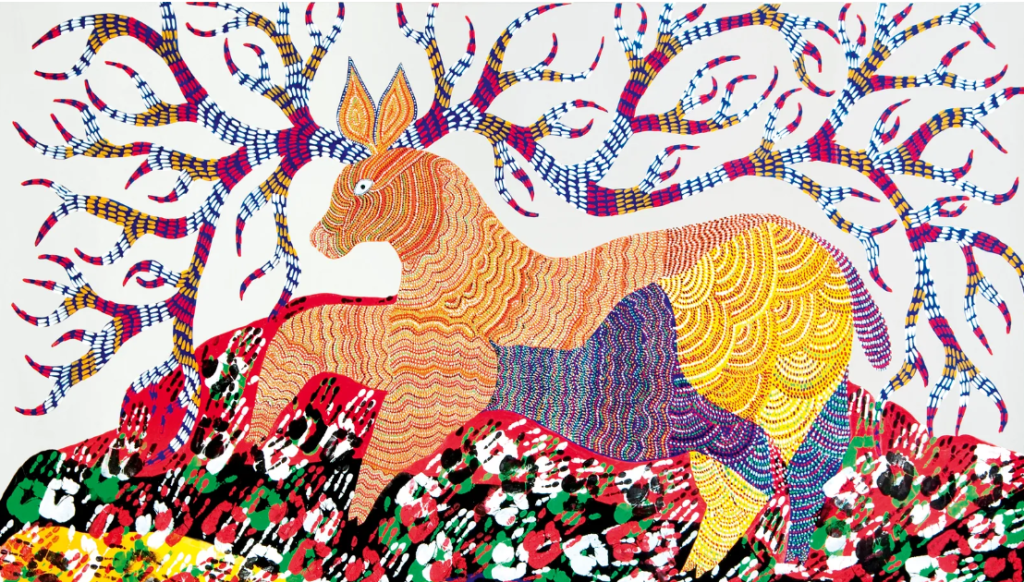
While textile printing traces its roots back to ancient civilizations, with archaeological discoveries showcasing early examples in Egypt, Mesopotamia, and Persia. However, it wasn’t until the 18th century that Indian textile art blossomed into a distinctive and independent genre. In India, we have developed distinct ways of printing on textile, be it block printing rendered in different states across the nation to Resist dye printing, Tie-Dye and now we have seen the advent of screen/digital printing too. But that is the topic for another piece of writing, as we have a vast history of textile printing and many variations of it too, which are found in different parts of the country.
Diving deep into our unique design lexicon, the Indian subcontinent has an incredibly inventive and resourceful repertoire of patterns. From intricately hand-drawn paisleys and tree of life motifs adorning elaborate chintz, traversing the globe, to the dots and dashes characterising “tribal” art forms like Gond and Bhil, this is the visual language bequeathed to us by our ancestors, adorning both our spaces and bodies.
Over the centuries, design patterns have undergone many shifts and transformations. The origins can be traced back to the Harappan civilisation, evidently found in motifs on the shawl worn by the Priest King and object carvings on Harappa’s archaeological sites. Subsequent dynastic rules, such as the Mauryas, Satavahanas, and Shungas, contributed to a dynamic cultural exchange reflected in their distinctive design language. These designs gave us a sense of what “Indianess” was and where it possibly came from. Post these dynastic rulers, we swiftly moved into the Sultanate and Mughal Period, our design repertoire expanded to incorporate motifs from Islamic traditions, Arab architecture, and aesthetics. This era witnessed meticulous detailing, intricate embroideries, and complex, stunning motifs, marking a period of expansive exploration in Indian art and architecture. Embracing change, this era brought significant shifts to our design vocabulary, incorporating new sensibilities into our existing artistic pantheon.
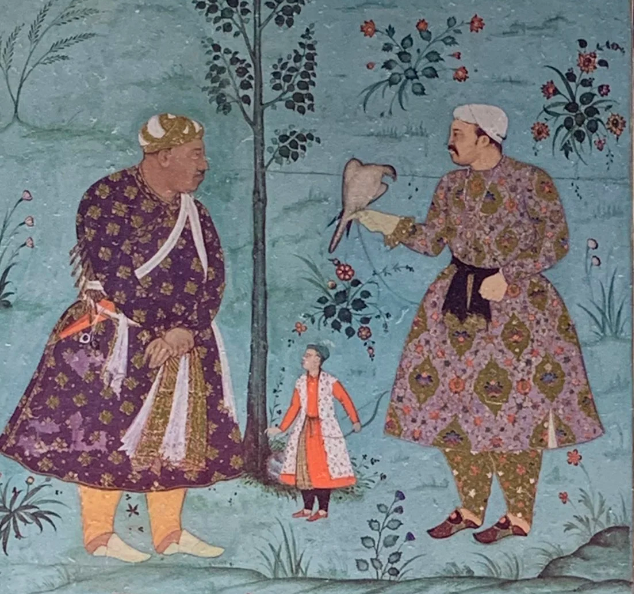
The Flower Garden: commissioned by Emperor Jahangir in the early 1600s. Courtesy:blog.marasim.co
Then came the colonial impact during the British rule in India, the British were captivated by our diverse textile and artistic heritage. They introduced mechanised looms and technologies that further changed our design lexicon. Designs were no longer simply handmade, handpainted, hand-woven or embroidered. Machines were brought in that could easily make Indian textiles that led to the decline of many traditional techniques and crafts as a whole. It was during this period that we also saw a massive expansion in exporting of Indian textiles and arts to faraway lands, which brought many inquisitive people into India, exploring our vast traditional knowledge and heritage wealth.
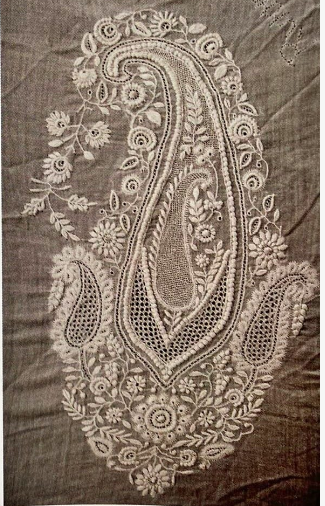
Post Independence, we saw the revival of many traditional crafts and techniques. Government and many private initiatives were launched to safeguard our textile heritage and with it our design heritage too. This era also saw the introduction of a fusion of traditional and modern designs, paving the way for a new era of Indian textile design.
The patterns and motifs that you see on our textiles and arts are not purely for decorative and visual aesthetics, they are very much a part of our cultural repertoire and our narrative. They harbour specific meanings and each symbol, pattern, design has a story to tell. Let’s delve into some of the iconography and motifs and what they might mean.
- Animals such as peacocks and elephants signify royalty and abundance. Peacocks signify spirituality and are the national bird of the country, while elephants signify abundance and strength. Many of our forefathers were also heavily inspired by their natural surroundings, they started drawing and making what they saw naturally occurring around them. Hence, it becomes easy to use our natural elements as motifs on textiles, art, jewellery, etc.
- Geometric patterns such as circles, triangles, dots and dashes that you often see in “folk” or “tribal” art are also coming to us from our natural world. These designs and motifs are also easy to make, often complex characters are rendered simplistically with the use of circles, triangles, squares, etc. One may prominently see these designs in the arts that come from North eastern states and Kutch crafts from Gujarat.
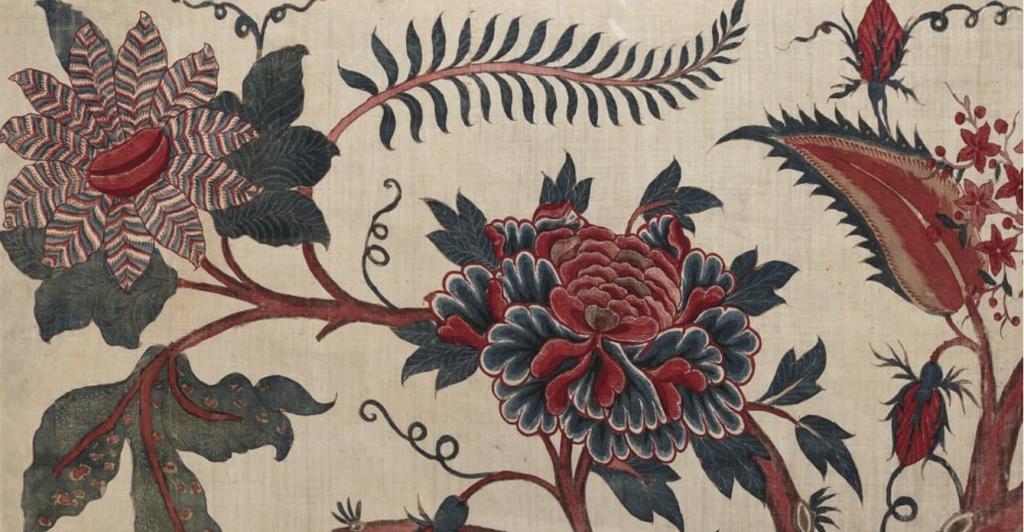
The design vocabulary is constantly shifting and transforming, our craft clusters and artisans are constantly learning from the world around them and reflecting that in their design language. We now see our folk artists telling new and contemporary stories with new-age motifs and designs. One of the examples to signify the same would be the Patua’s from Bengal and Odisha. Post the pandemic, new stories are being told by the Patua singers/artists – COVID virus is being reflected in the artworks, technologies such as railways, metros, concrete structures, cellphones, etc have not entered the design language. We are no longer restricted to floral and geometric patterns that one sees around them.
The design language of India has shown continuity and change, it has managed to constantly reinvent itself all the while preserving its roots. This design legacy continues to captivate the contemporary world. Each pattern serves as a visual clue into our cultural resilience, adaptability, and artistic brilliance of our very visual nation.
End of an Era: National Museum Facing Closure and Demolition

Contributor


